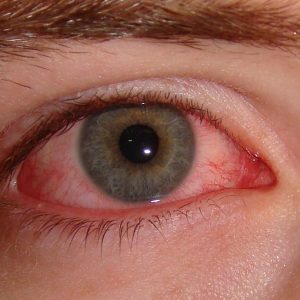Pink Eye (Conjunctivitis)
What is Pink Eye?
Pink eye is an infection of the membrane (conjunctiva) that lines your eyelid and surface of the eye. When the small blood vessels in the membrane are inflamed, the white of your eye appears pink. One or both eyes can be affected. Though irritating and painful, pink eye should not affect your vision. However, pink eye is contagious, so learn the symptoms to reduce the risk of spreading it to others.
Symptoms of Pink Eye
- Eye redness
- Itchy eyes
- Watery/teary eyes
- Swollen eyelids
- Discharge from the eyes
- Sensitivity to light
Causes and Treatment of Pink Eye
Pink eye can be caused by viruses, bacteria, dry eyes, allergies or irritants. It is important to see your health care provider since treatment can vary depending on the cause. Most of the time, pink eye will clear out on its own in a week or two with help from eye drops (artificial tears) to relieve dryness and cool compress to reduce swelling, irritation or pain. However, pink eye caused by bacteria will need to be treated with antibiotics. If left untreated, it can lead to severe damage to the eye and/or vision.
Things to do:
- If you wear contact lenses, stop wearing them until your symptoms subside
- Remove irritants or allergens from the eye or the surroundings
- Clean your eye carefully and thoroughly to remove discharge or crust
- Monitor your symptoms
Prevention of Pink Eye
Viral and bacterial pink eye are contagious. If you have pink eye, stay away from others until symptoms have lessened. The best way to control the spread of pink eye is to practice good hygiene:
- Wash your hands often
- Use clean towels
- Don’t share face towels
- Don’t touch or rub your eyes
- Don’t share eye makeup
- Clean your eyeglasses and disinfect contact lenses thoroughly
References:



